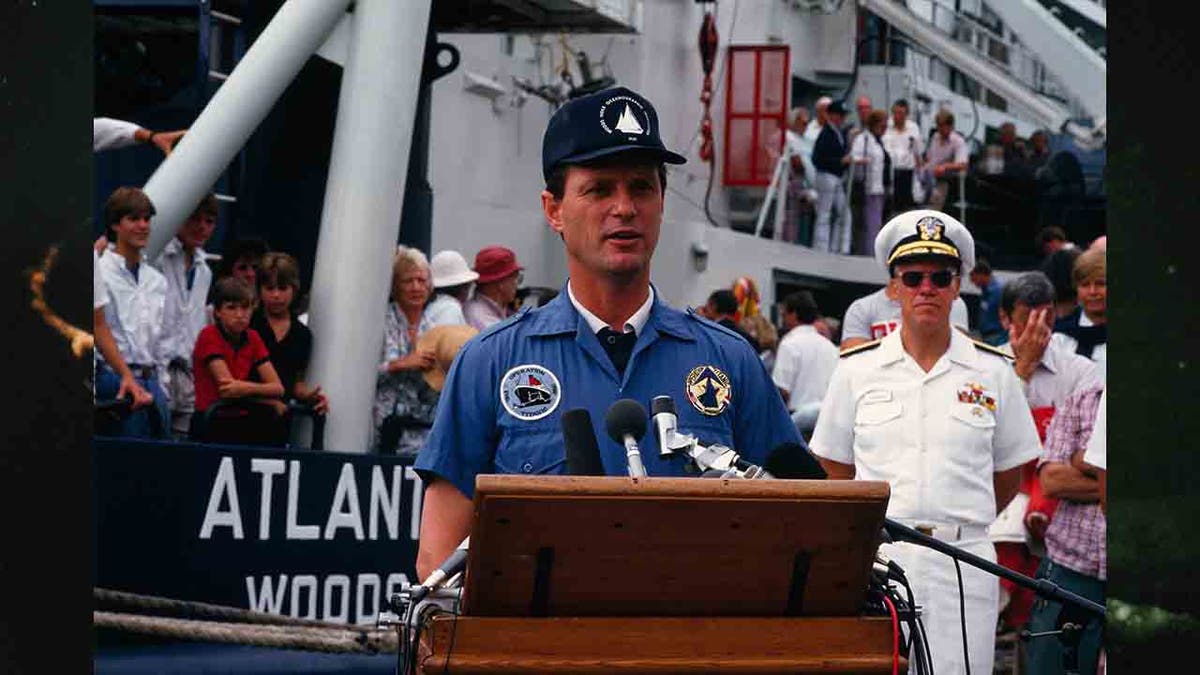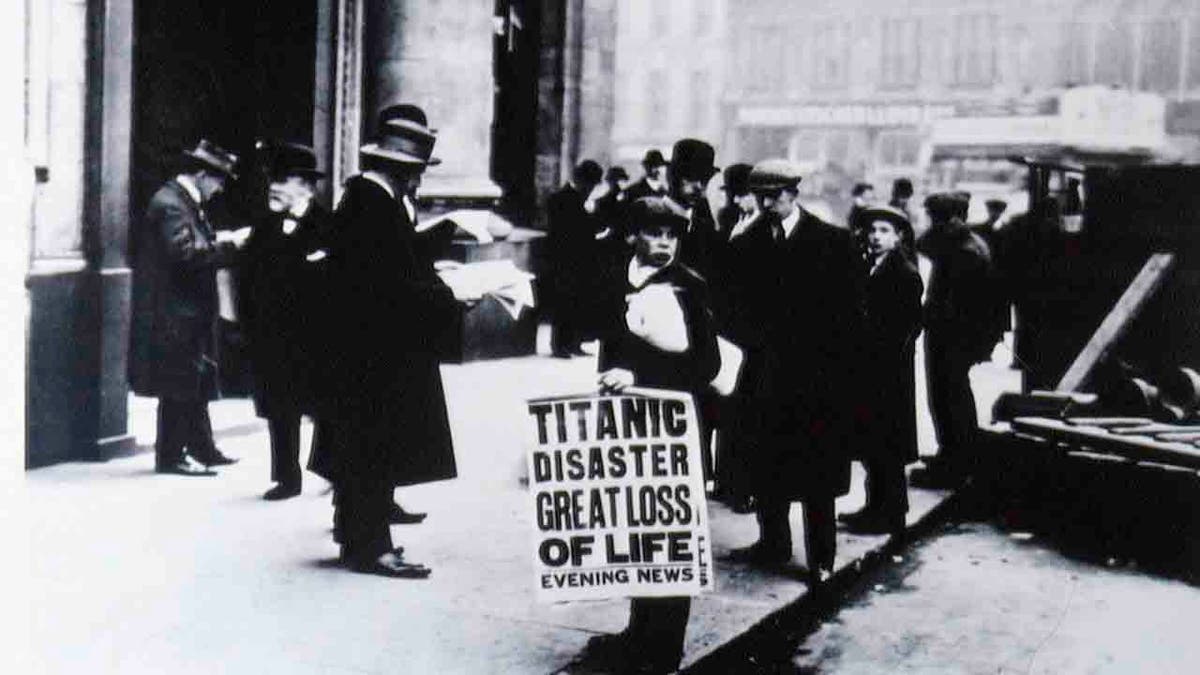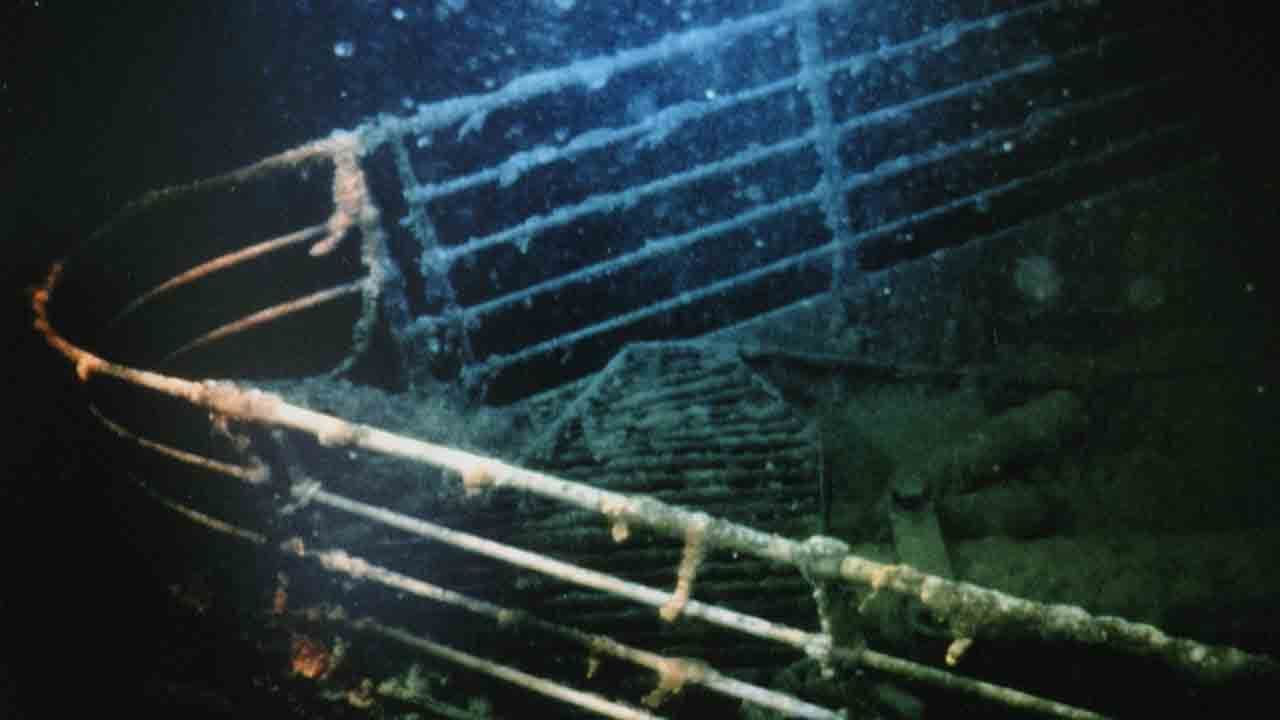A 73-year-old mystery was solved on this day in history, September 1, 1985, when the wreck of the ocean liner RMS Titanic was discovered in the North Atlantic.
The wreck was discovered during a joint mission between the Massachusetts-based Woods Hole Oceanographic Institution (WHOI) and the French National Institute of Oceanography (IFREMER), according to WHOI's website.
The mission was funded by the U.S. Office of Naval Technology and was intended to “test the ability of these new underwater imaging systems to locate objects on the seafloor,” according to the website.
ON THIS DAY IN HISTORY, AUGUST 31, 1888, JACK THE RIPPER CLAIMS HIS FIRST VICTIM
The sinking of the Titanic “provided a high-profile backdrop for the mission.”
Led by Dr. Robert D. Ballard of WHOI and Jean Louis Michel of IFREMER, the two-part mission initially narrowed the search area to a 100-square-mile swath of ocean.
The wreck of the RMS Titanic was found on September 1, 1985. (Mathieu Polak/Sygma/Sygma via Getty Images)
The first phase of the mission began on 1 July 1985. It consisted of a French team aboard the French research vessel Le Suroit.
The Le Suroit crew used a sonar system, the “System Acoustique Remorquè” (an acoustic towing system), to comb the ocean floor in a “grass-cutting” pattern.
“There were other sonar systems available in 1985, but the newly developed SAR system was the most sophisticated, providing better quality images and creating almost a photograph of the seafloor,” WHOI said.
Le Suroit spent a month at sea. While his crew did not find the Titanic, they ruled out about 75% of the search area, according to WHOI.
THE TITANIC: FROM DINNERS TO ICEBERG WARNINGS, 10 FASCINATING FACTS ABOUT THE 'UNSINKABLE' SHIP
The second phase of the mission to locate the Titanic began on August 15, aboard the research vessel Knorr.
The team took a radical approach to scanning the remaining search field.
In addition to the American team from WHOI, three French scientists from IFREMER were on board.
After a week, the Knorr reached the area where Le Suroit had last looked.
“With only 12 days of ship time to conduct the search, the WHOI team took a radical approach to scanning the remaining search field,” WHOI said.

Robert Ballard, oceanographer and former commander in the United States Navy, pictured here, was one of the leaders of the French-American expedition that discovered the wreck of the RMS Titanic. (Ira Wyman/Sygma via Getty Images)
Rather than searching for a single large object, such as the Titanic's hull, the Knorr crew used an imaging tool called “ANGUS” (Geological Underwater Survey Using Acoustic Navigation) along with a video camera/sonar system called “Argo,” to search for any debris that might have come from the Titanic.
This strategy worked: Shortly after 1 a.m. on Sept. 1, 1985, the Knorr found one of the Titanic's boilers, according to the WHOI website.
The last four days of the trip were spent filming the newly discovered wreck with ANGUS and Argo, the site added.
Just over 700 people survived the sinking of the Titanic.
The discovery of the wreck also confirmed anecdotal reports from survivors of the sinking: the ship had indeed broken into two pieces as it sank.
TITANIC: 110 YEARS LATER
The largest ship in the world when it was built, the RMS Titanic, sank in the early morning of April 15, 1912, less than three hours after striking an iceberg.
She had been on a trip from Southampton, England to New York City.
Just over 700 people, less than a third of the total number of crew and passengers, survived the sinking.

The Titanic was en route from Southampton to New York City when it sank on April 15, 1912. (AP Photo/File)
Titanic survivors were largely divided by class: only 174 of the 700 third-class passengers survived, according to Encyclopedia Britannica.
By contrast, nearly two-thirds of the more than 300 first-class passengers survived, according to the Titanic Facts website.
The Titanic's massive death toll was due in part to extremely poor planning and a lack of maritime regulations.
In response to the tragedy, new safety regulations were adopted for merchant ships.
The Titanic's size meant that it was equipped to carry 64 lifeboats, more than enough for the 2,200 passengers and crew on board.
CLICK HERE TO SUBSCRIBE TO OUR LIFESTYLE NEWSLETTER
However, it was equipped with only 16 lifeboats, plus four additional “collapsible” ones, History.com said.

The sinking of the RMS Titanic was one of the deadliest peacetime maritime disasters of the 20th century. (Mathieu Polak/Sygma/Sygma via Getty Images)
The total capacity of those 20 lifeboats was only 1,178 passengers, about half the number of people on board the ship.
In response to the tragedy, new safety regulations were adopted for merchant ships.
For more lifestyle articles, visit www.foxnews/lifestyle
The first SOLAS, or International Convention for the Safety of Life at Sea (SOLAS), was a seven-week convention held in London from November 1913 to January 1914.
CLICK HERE TO GET THE FOX NEWS APP
The treaty outlined new mandatory ship safety features, including requirements that ships have enough lifeboats for everyone on board, the International Maritime Organization's website says.












